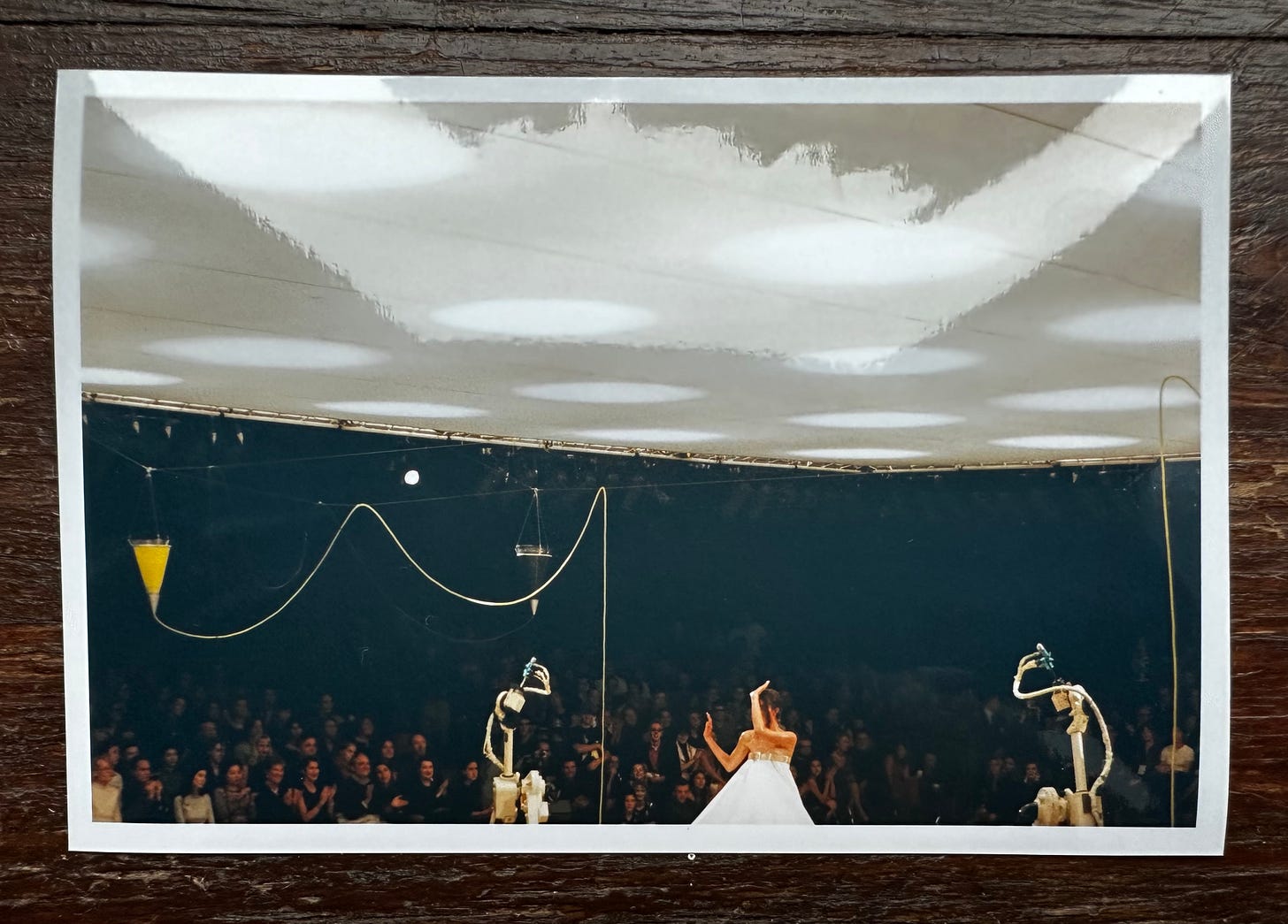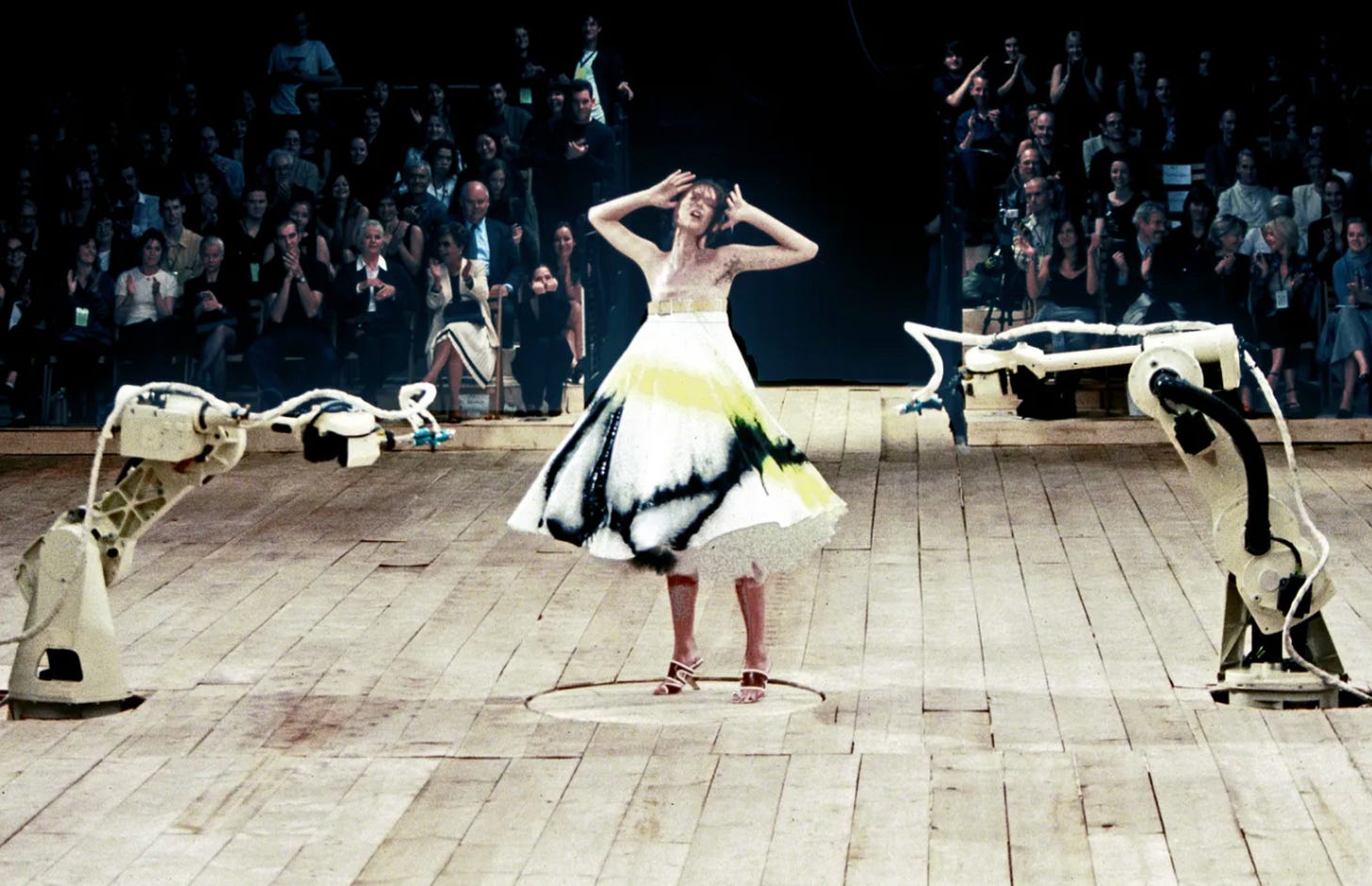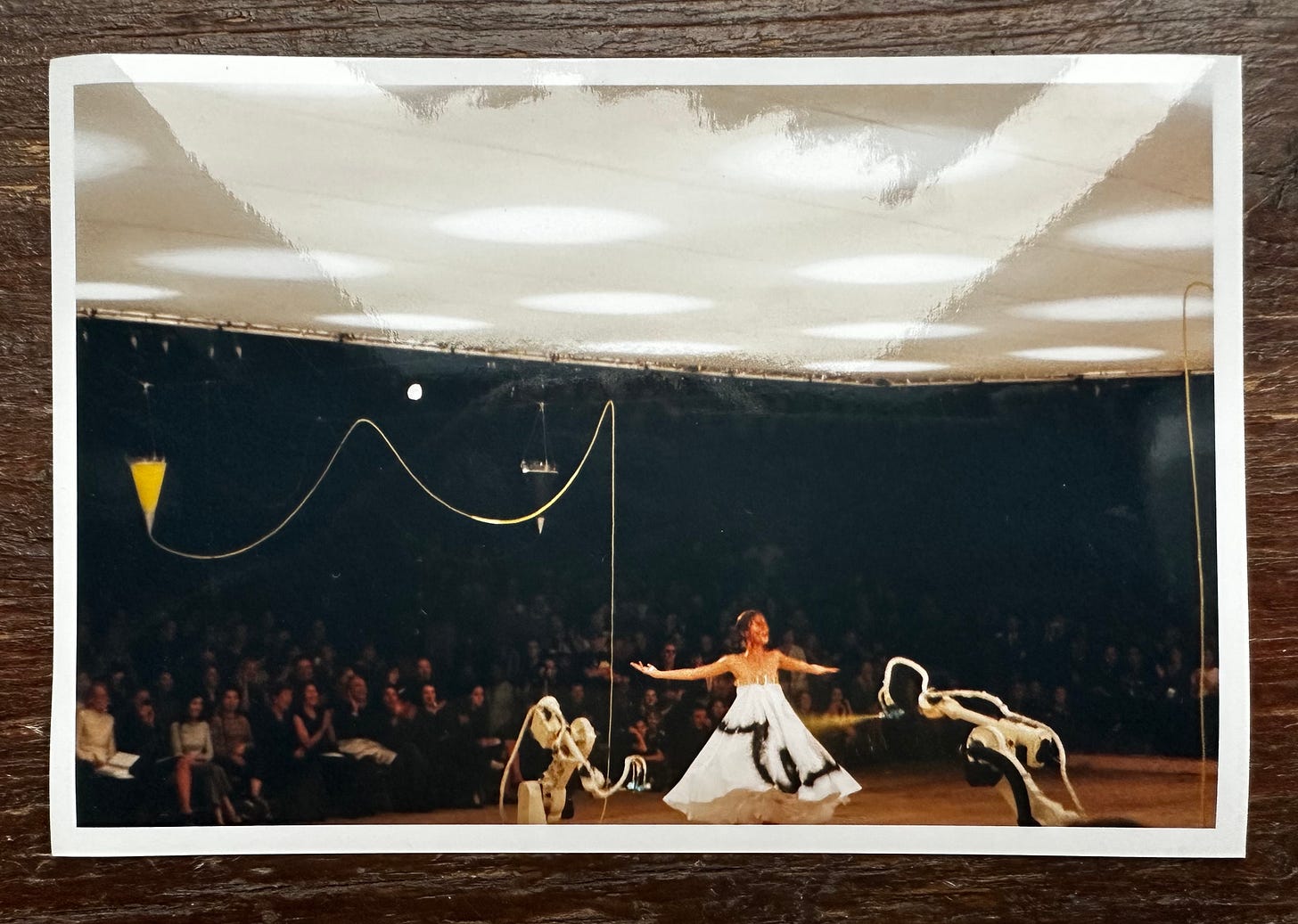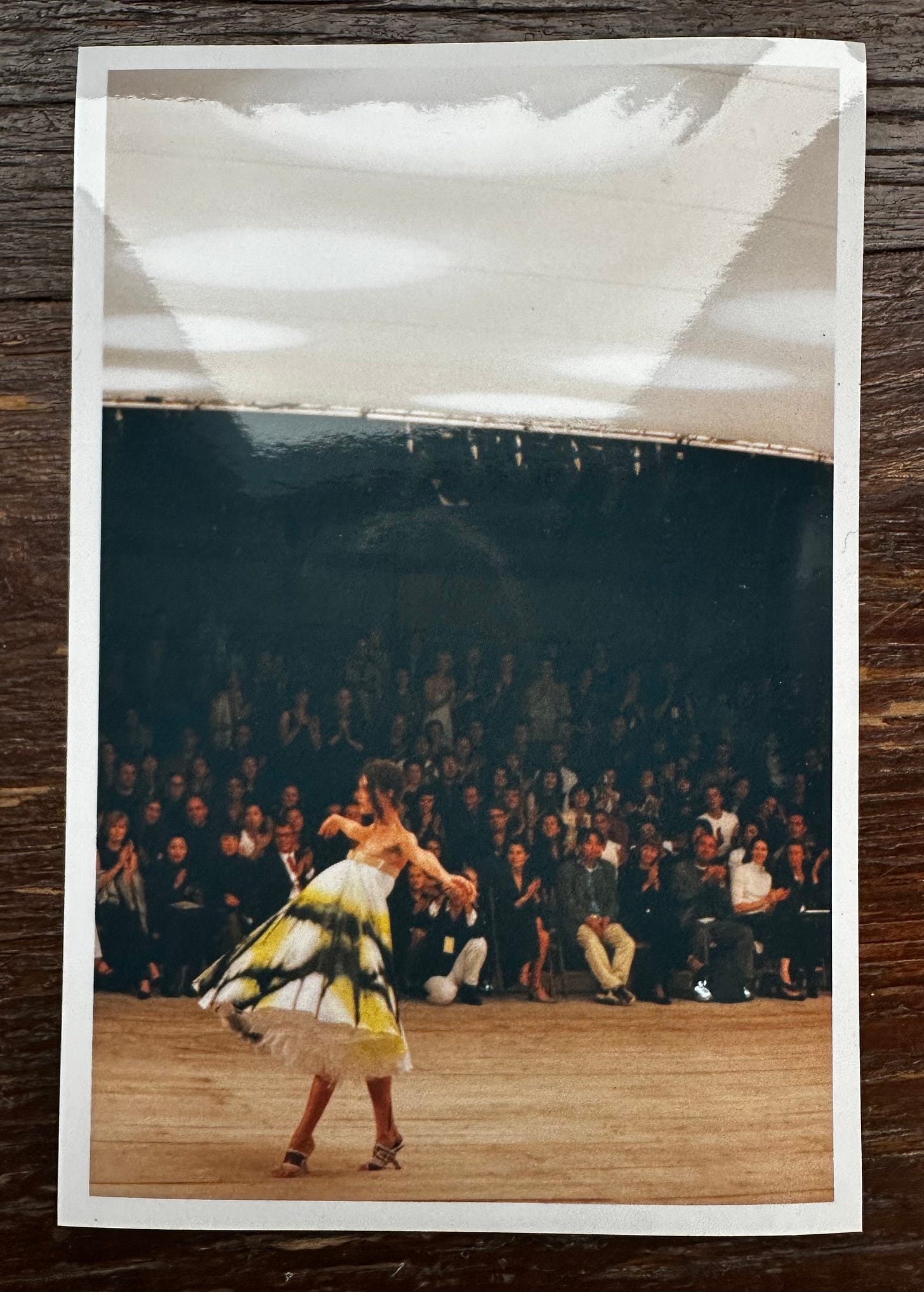THE GREATEST FASHION SHOW ON EARTH
Today, we gobble up and spit out fashion while simultaneously wondering where the showmanship went. But in an album of my old photographs from London, I found it again.
It’s Fashion Month, as those who take a month to do fashion twice a year call it, and I’m in NYC watching shows from Milan and the Super Models documentary on Apple. There’s nostalgia everywhere – for the time when shows were spectacles, when models were super, when magazines…existed. It’s funny reconciling all these things on Instagram and streaming, which have given us so much but also hastened the demise of the very things we’re currently nostalgic for. Fashion feels like its fighting with itself: for example, at Gucci, Alessandro Michele was too much, but Sabato de Sarno is not enough. Suddenly everyone’s Goldilocks, looking for just right. But it all reminded me of one thing…
I was at my Mum’s apartment in Sydney a few weeks ago, helping her do some spring cleaning (it’s winter in the upside down under) when I came across a bunch of photographs from when I was living in London (1997-1999). Yes, photographs – do you remember them? You had a camera, even, wait for it, a disposable one. You took pictures on it, you used up the film, then you took the film to be developed. Isn’t that adorable? And it wasn’t just cute; it was downright suspenseful. Did the picture you took with your eyes and a hopefully deft click of the finger result in permanent glory? Who remembers running to the photo lab (my choice was Snappy Snaps in Islington), grabbing your picture folder and going through it right there, because you couldn’t contain yourself?
Well, lemme tell you iPhone generation kids, photographs were fun. And for me, it was even more thrilling because you know what I was taking pictures of? Fashion shows in London! My first ones ever! I remember getting so overwhelmed at a Ben de Lisi (lovely designer, very fond of red) show in 1997 that I took a picture of every single look. Now, no shade to Ben de Lisi, but the show didn’t require a personal archivist.
My excitement was in other ways deserved, however, because this was The Time for British fashion. Clements Ribiero, Antonio Berardi, the debut of Matthew Williamson with his supermodel-and-butterfly-filled first show, and one Lee Alexander McQueen. Now, I was in the nascency of my career – freelancing for Australian magazines - where I sat in the furthest possible row back, where the models were just floating torsos. But this in no way tempered my excitement - it only enhanced it. Hell, sometimes I just snuck in.
I went to two McQueen shows: one, his fall 1998 “Joan” collection, inspired by the murders of Joan of Arc and the Romanov family and culminating with a model, head covered and in hellish sparkling red, surrounded by a ring of fire. The next season, Spring/Summer 1999, was titled ‘No. 13.’ McQueen liked to show near Victoria Station in London, at night, consummately merging history, heraldry and darkness before you even walked in the door.
When you entered the show space, you were greeted by a wooden square, with two curled up pieces of white industrial equipment in the middle of it. I couldn’t quite work out what they were, but I wasn’t exactly focused, rather I was overstimulated, feverishly checking out the front row and feeling for the poor chap who was sitting behind Isabella Blow’s hat.
The show started and Erin O’Connor walked out in a black pantsuit, followed by Bridget Hall in a black dress, her hair spackled on her face. A procession followed of razor tailoring, McQueen’s infamous “bumsters” and frock coats all set to thudding techno music. Do you remember the model Esther Canadas? She was illegally hot, slinking by in a silver halter dress.
The show graduated into stiff corsets that looked like they were blown by freezing wind. Then it went dark. Spotlights came up on two models who rotated in suspended skirts like a ballerina when you open a jewelry box. Then, lights back on, into a series of immortal floral embroidered hessian dresses. Then athlete Aimee Mullins, who lost her legs when she was a year old, appeared, walking on the most exquisite carved wooden boots.
It went dark again. This time, there were five revolving metallic beauties, encased in dazzling hoods, headpieces, and full-body crystal halos. What sorcery was this?! The applause started after every change of light: the audience was transfixed, with no iPhones, no influencers…no Jenners to distract from the stagecraft before them.
The lights went down one more time, coming up on Shalom Harlow, in a strapless, belted white dress with giant tulle underlay. She started to revolve, and the foreign machines, revealed to be robots, jolted to life. They loomed up on her as she held her slender arms up for protection. They came closer, suddenly, harshly, spraying her with black and fluorescent yellow paint. She submitted. The audience was at first silent, then enraptured. All the coolness was swept away, only wide eyed children left behind.

‘No. 13’ was one of the most beautiful things, in the unnatural world, that I’ve ever seen: the greatest rock concert/ firework display/magic show that happened anywhere, ever. Nothing has ever topped it. I just rewatched the show, 25 years later, and the finale makes me cry.
I still can’t believe I was there, but thank God, I have the photographs.








This is an odd question, but do you happen to still have the show notes from Joan? I've been looking for a scan of them for a dog's age.
I watched the McQueen doco and also cried
at the painted Shalom scene, absolutely beautiful.